Soap making Problems
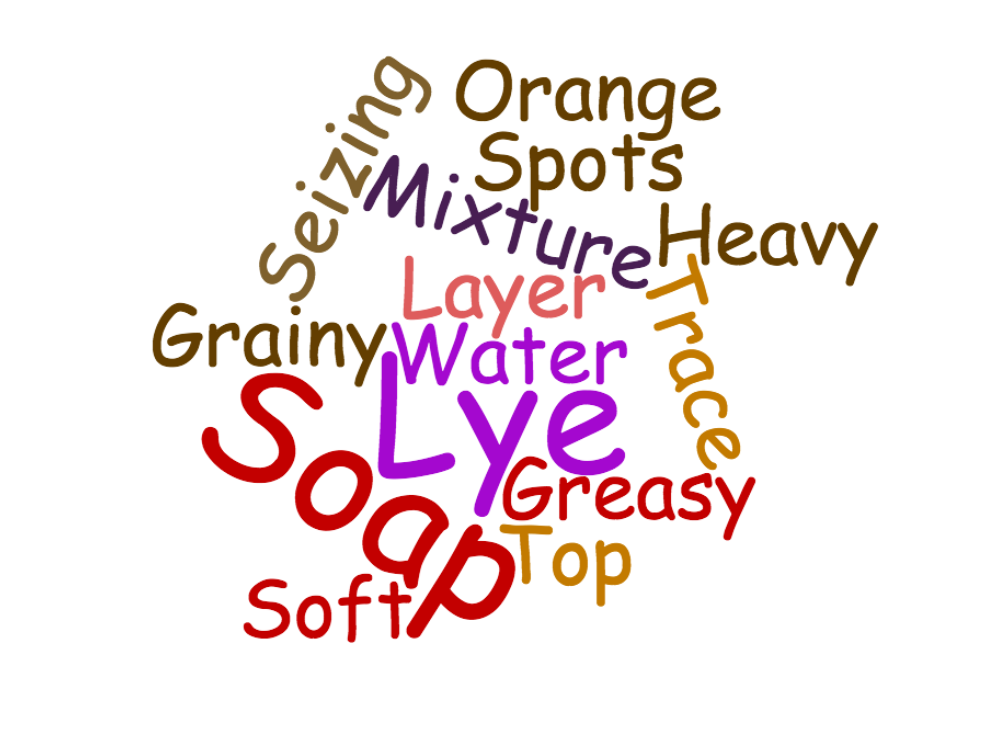
Lye Heavy Soap – adding too much lye to your recipe will leave you with a bar that can irritate the skin and should not be sold. Lye heavy soap will feel dry and can be crumbly. Checking your soaps ph will let you know for sure if it is heavy in Lye.
Lye heavy soap can still be used for laundry soap, after it has cured simply shred the soap up and add washing soda and baking soda. Use equal amounts of baking soda and shredded soap add to that ½ the amount of washing soda ie: 2 cups BS, 2 cups Shredded soap and 1 cup washing soda.
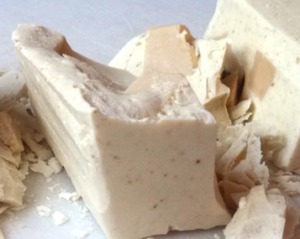
Soft Soap – soap is usually still soft when it comes out of the mold, but if after curing the soap is still soft then something has gone wrong. It could be that not enough lye was added to the lye/water mixture, or too much water was added. Those are usually the most common, but if you are experimenting with different oils, it could be due to using to high a percentage of soft oils.
Dreaded Orange Spots (DOS) this is usually an indication that the soap is becoming rancid, when this happens the soap does not smell that great anymore, but it is not unsafe to use. If the soap is being stored in a humid environment or super fatted more than 5 % this can happen.
Seizing – some fragrance oils can cause your soap to seize, this is when your soap suddenly starts to get thicker very quickly and it’s hard to work with. Fragrance oils are best used with Cold Process soap making and added at lower temperatures. If seizing happens the only thing to do is to get it into the mold as quick as possible.
Lye Pockets – you will know lye pockets when you see them; it’s like little air bubbles with liquid in them. Often if they are present you will see them when cutting your bars. This can be caused by not stirring the batch enough, stirring to slow or too much lye. These bars are unsafe for use as they could burn the skin.
Mixture does not come to trace – this can happen if you are stirring the mixture to slowly, the temperatures are incorrect or there is too much water or not enough lye. If the cause is from stirring slowly, just continue or use a stick blender and it should trace in not too much time, but if it was too much water or a lack of lye I’d scrap the batch and start over.
Greasy layer on top of soap – this is an indication that the lye/water and oils are not the correct amounts, or the soap was poured into the molds to soon. It can also be due to not stirring the batch well enough or the temperature in the molds dropping way to fast.
Grainy mixture – This usually happens when the soap is mixed at a very high or low temperature. It can also happen if the stirring is not brisk and constant. The soap will still be just fine.
#handmadesoap #naturalsoap #makingsoapnaturally #soapmaking #soapmaking #soaps #artisansoap #bathandbody #cpsoap #coldprocesssoap #etsy #soapbase #soapcrafter #soapmaker #soaping #soapcrafting #soaphandmade #soap #giftidea #christmas #barsoap #handmadesoap #natural #organic #skincare #coldprocess #soapsupplies #soapproblems #soapmakingproblems #whathappenedtomysoap
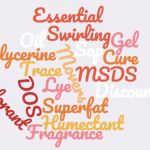
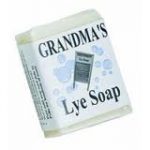
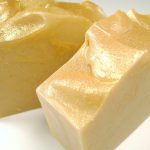
© 2017 – 2019, Tes. All rights reserved.
Can ph still be tested after bar is hard? If so, how? Thanks. Can I just wet it and apply the ph paper?
Yes you can test the ph of a bar of soap, simply wet the soap with water and rub the soap to form bubbles. Place the pH strip on the wet soap to get your pH reading.
Testing the Ph of your soap